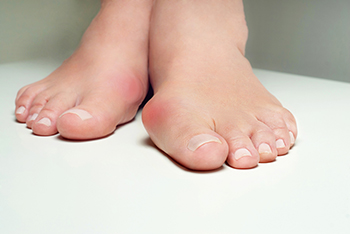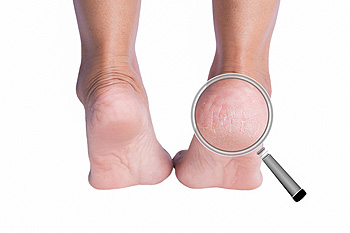Connect With Us
Blog
Items filtered by date: February 2023
Proper Wound Care Begins With Clean Hands

A wound can happen from a surgical cut that is made through the skin, or it can happen for other reasons. Proper wound care starts with washing and drying the hands, followed by gently cleaning the wound. This can be done by using a saline solution or soapy water. It is crucial to remove any dried blood that has accumulated, which can aid in the healing process. When applying the dressing, it is important to cover the entire wound, in addition to changing it daily. If the wound is on the foot, it generally needs prompt medical attention. Diabetic patients can easily have wounds on their feet as a result of neuropathy, which is the inability to feel cuts or scrapes. Wounds can form from existing cuts in people who are diabetic, which can possibly prompt critical health hazards to develop. If you have a wound on your foot, it is strongly suggested that you are under the care of a podiatrist who can accelerate the healing process with proper treatment.
Wound care is an important part in dealing with diabetes. If you have diabetes and a foot wound or would like more information about wound care for diabetics, consult with Bill Brown, DPM from Brown Podiatry. Our doctor will assess your condition and provide you with quality foot and ankle treatment.
What Is Wound Care?
Wound care is the practice of taking proper care of a wound. This can range from the smallest to the largest of wounds. While everyone can benefit from proper wound care, it is much more important for diabetics. Diabetics often suffer from poor blood circulation which causes wounds to heal much slower than they would in a non-diabetic.
What Is the Importance of Wound Care?
While it may not seem apparent with small ulcers on the foot, for diabetics, any size ulcer can become infected. Diabetics often also suffer from neuropathy, or nerve loss. This means they might not even feel when they have an ulcer on their foot. If the wound becomes severely infected, amputation may be necessary. Therefore, it is of the upmost importance to properly care for any and all foot wounds.
How to Care for Wounds
The best way to care for foot wounds is to prevent them. For diabetics, this means daily inspections of the feet for any signs of abnormalities or ulcers. It is also recommended to see a podiatrist several times a year for a foot inspection. If you do have an ulcer, run the wound under water to clear dirt from the wound; then apply antibiotic ointment to the wound and cover with a bandage. Bandages should be changed daily and keeping pressure off the wound is smart. It is advised to see a podiatrist, who can keep an eye on it.
If you have any questions, please feel free to contact our office located in Scranton, PA . We offer the newest diagnostic and treatment technologies for all your foot care needs.
Two Types of Hammertoe

Hammertoe is a common foot condition and is considered to be a deformity. It is noticeable as the joints in the middle toes bend upward, forcing the toes to point downward, somewhat resembling a hammer. It generally happens as a result of wearing shoes that do not have adequate room for the toes to move freely in, gradually causing them to shift abnormally. Some patients develop corns on top of the affected toes, as they touch the top of the shoe while walking. Hammertoe can fall into two categories that are referred to as flexible or rigid. As the name implies, flexible hammertoe can move at the joint, and relief may come from using a protective pad. Rigid hammertoe may press the joints out of alignment, and different relief methods may be used. If you have any form of hammertoe, it is a good idea to confer with a podiatrist who can determine what the best course of treatment is for you.
Hammertoes can be a painful condition to live with. For more information, contact Bill Brown, DPM of Brown Podiatry. Our doctor will answer any of your foot- and ankle-related questions.
Hammertoe
Hammertoe is a foot deformity that occurs due to an imbalance in the muscles, tendons, or ligaments that normally hold the toe straight. It can be caused by the type of shoes you wear, your foot structure, trauma, and certain disease processes.
Symptoms
- Painful and/or difficult toe movement
- Swelling
- Joint stiffness
- Calluses/Corns
- Physical deformity
Risk Factors
- Age – The risk of hammertoe increases with age
- Sex – Women are more likely to have hammertoe compared to men
- Toe Length – You are more likely to develop hammertoe if your second toe is longer than your big toe
- Certain Diseases – Arthritis and diabetes may make you more likely to develop hammertoe
Treatment
If you have hammertoe, you should change into a more comfortable shoe that provides enough room for your toes. Exercises such as picking up marbles may strengthen and stretch your toe muscles. Nevertheless, it is important to seek assistance from a podiatrist in order to determine the severity of your hammertoe and see which treatment option will work best for you.
If you have any questions, please feel free to contact our office located in Scranton, PA . We offer the newest diagnostic and treatment technologies for all your foot care needs.
Genetics May Cause Bunions to Form

A bunion is easy to notice. The medical term for this condition is referred to as hallux valgus, and is evident by the bony lump that gradually develops on the side of the big toe. It happens from genetic reasons, or from wearing shoes that do not have ample room for the toes to move in freely. This may cause pressure to be exerted on the big toe, which can move toward the other toes, possibly causing them to shift toward each other. Many people develop corns or calluses on top of the toe from having it rub on the top of the shoe, and it can appear unsightly. Having an abnormal foot structure may lead to developing bunions, which is why family members may have them. Patients may choose to wear protective coverings over their bunion, which can shield it from the top of the shoe. If you have developed this ailment, it is suggested that you are under the care of a podiatrist who may recommend surgery for permanent removal.
If you are suffering from bunions, contact Bill Brown, DPM of Brown Podiatry. Our doctor can provide the care you need to keep you pain-free and on your feet.
What Is a Bunion?
A bunion is formed of swollen tissue or an enlargement of boney growth, usually located at the base joint of the toe that connects to the foot. The swelling occurs due to the bones in the big toe shifting inward, which impacts the other toes of the foot. This causes the area around the base of the big toe to become inflamed and painful.
Why Do Bunions Form?
Genetics – Susceptibility to bunions are often hereditary
Stress on the feet – Poorly fitted and uncomfortable footwear that places stress on feet, such as heels, can worsen existing bunions
How Are Bunions Diagnosed?
Doctors often perform two tests – blood tests and x-rays – when trying to diagnose bunions, especially in the early stages of development. Blood tests help determine if the foot pain is being caused by something else, such as arthritis, while x-rays provide a clear picture of your bone structure to your doctor.
How Are Bunions Treated?
- Refrain from wearing heels or similar shoes that cause discomfort
- Select wider shoes that can provide more comfort and reduce pain
- Anti-inflammatory and pain management drugs
- Orthotics or foot inserts
- Surgery
If you have any questions, please feel free to contact our office located in Scranton, PA . We offer the newest diagnostic and treatment technologies for all your foot care needs.
Crack the Case of Cracked Heels

Cracked heels, also known as heel fissures, are common and can affect anyone. However, women are more apt to report this condition than men. Cracked heels are unsightly, can cause discomfort, and if left untreated, can lead to infections. If the cracks run deep, it can hurt to stand and walk, and they may even bleed. Heel fissures are generally a result of dry skin but can also be caused by obesity, standing for long periods, or wearing ill-fitting shoes. Along with the cracks, the skin on the heel can become thick and discolored. Sometimes calluses can develop on the heel edge. A few home remedies one can try are moisturizing treatments, using petroleum jelly, and applying a keratolytic to thickened skin. Using creams, lotions, or ointments can help restore moisture to the skin on the heels. Petroleum jelly can be applied to cracked heels at night, and 100% cotton socks can be worn to keep moisture in, allow the skin to breathe, and prevent bed sheets from getting stained. If this condition does not abate with self-care techniques, is related to a medical condition, or an infection seems to be looming, see a podiatrist who can offer treatment options to restore you to comfort.
Cracked heels are unsightly and can cause further damage to your shoes and feet. If you have any concerns, contact Bill Brown, DPM from Brown Podiatry. Our doctor can provide the care you need to keep you pain-free and on your feet.
Cracked Heels
Cracked heels appear unappealing and can make it harder for you walk around in sandals. Aside from looking unpleasant, cracked heels can also tear stockings, socks, and wear out your shoes. There are several methods to help restore a cracked heel and prevent further damage.
How Do You Get Them?
Dry skin is the number one culprit in creating cracked heels. Many athletes, walkers, joggers, and even swimmers suffer from cracked heels. Age and skin oil production play a role to getting cracked heels as well.
Promote Healing
Over the counter medicines can help, especially for those that need instant relief or who suffer from chronic dry feet.
Wear Socks – Wearing socks with medicated creams helps lock in moisture.
Moisturizers – Applying both day and night will help alleviate dryness which causes cracking.
Pumice Stones – These exfoliate and remove dead skin, which allows for smoother moisturizer application and better absorption into the skin.
Change in Diet
Eating healthy with a well-balanced diet will give the skin a fresh and radiant look. Your body responds to the kinds of food you ingest. Omega-3 fatty acids and zinc supplements can also revitalize skin tissue.
Most importantly, seek professional help if unsure how to proceed in treating cracked heels. A podiatrist will help you with any questions or information needed.
If you have any questions, please feel free to contact our office located in Scranton, PA . We offer the newest diagnostic and treatment technologies for all your foot care needs.

